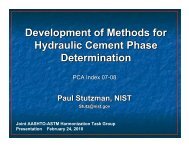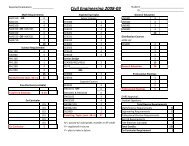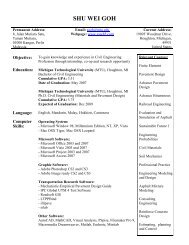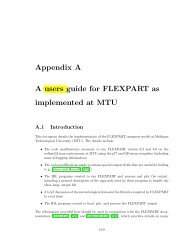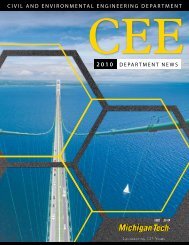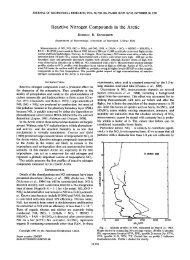Evaluation of Septic Tank and Subsurface Wetland for
Evaluation of Septic Tank and Subsurface Wetland for
Evaluation of Septic Tank and Subsurface Wetland for
You also want an ePaper? Increase the reach of your titles
YUMPU automatically turns print PDFs into web optimized ePapers that Google loves.
Chapter 4 - Methodology<br />
Field Data Collection<br />
Site evaluation began on August 17, 2004 prior to the beginning <strong>of</strong> the school term to<br />
gather background data that would reveal the status <strong>of</strong> the systems under no loading. The<br />
field visits continued over a seventeen-week period ending on December 14, 2004 as the<br />
school term finished. Both sites were visited a total <strong>of</strong> sixteen times to collect water<br />
quality samples <strong>and</strong> record operational data.<br />
Water quality samples included one set <strong>of</strong> background, five sets <strong>of</strong> in-service samples <strong>and</strong><br />
one duplicate set <strong>for</strong> inter-laboratory comparison. Water quality grab samples were<br />
collected from three points along the treatment process to measure the progress through<br />
each unit operation. Sample point locations are indicated in Figure 3-3 <strong>and</strong> Figure 3-6.<br />
The first sample at each site was drawn from the top <strong>of</strong> the first septic tank (first<br />
chamber) to represent the raw sewage influent. The second sample was drawn from the<br />
wetl<strong>and</strong> inlet distribution manhole or inlet distribution pipe. The third sample was to<br />
represent the effluent. At Retrieve, this sample was collected at the wetl<strong>and</strong> outlet.<br />
Because there was never effluent at Pisgah, a surrogate sample was collected near the<br />
middle <strong>of</strong> the wetl<strong>and</strong> at the edge <strong>of</strong> the flourishing, tall wild cane. This mid-wetl<strong>and</strong><br />
sample point was a slotted 4-inch PVC pipe reaching the bottom <strong>of</strong> the bed. Water from<br />
this point should have passed through the most significant portion <strong>of</strong> the treatment<br />
process. All samples with the exception <strong>of</strong> the effluent at Retrieve were collecting using<br />
a basting syringe (see Figure 4-1).<br />
24



